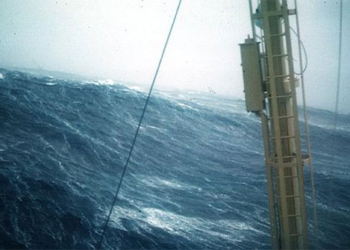The cause of the Titan submersible explosion is under investigation.
Investigators are examining the debris of the OceanGate Titan submersible to understand the reason for its explosion while diving to the bottom of the Atlantic Ocean, resulting in the deaths of all five passengers aboard.
According to Dr. Peter Girguis, a professor and marine scientist at Harvard University, the debris recovered from a depth of 12,500 feet will be key in explaining the fate of the passengers and the extent of the damage to the vessel.
“In summary, investigators will examine the hardware after recovery and try to determine where the failure occurred,” he told The Post on June 29. He further noted: “The investigation team may also review documents and search for patterns to identify where and how the failure happened.”
Thorough Examination of the Hull and Windows
Professor Girguis indicated that the most likely culprit is the carbon fiber hull.
Unlike most other underwater vehicles that use titanium or steel for their shells, the Titan’s hull is made of carbon fiber and is capped at both ends with titanium material.
One of these titanium ends was found and brought ashore on June 28. The Coast Guard reported that the debris indicated a catastrophic explosion, with the hull succumbing to immense pressure and disintegrating, leading to the tragic loss of the five passengers.
Marine scientist Girguis from the Woods Hole Oceanographic Institution also pointed out the detail of the submersible’s round glass windows, which differ from designs that have been tested and utilized for decades in submersibles from other countries. “The windows on the Titan are unlike conventional designs. It’s worth examining to understand its role in this disaster.”
Girguis commented that the sudden temperature changes between ocean regions would also be considered: “Sudden temperature changes can impose additional stress on materials.”

Debris from the submersible being recovered.
Reviewing the Vessel’s Testing Records
The New York Post reported that it remains unclear whether OceanGate’s owner, Stockton Rush, subjected the Titan to industry-standard pressure tests. Most deep-sea vehicles must undergo multiple tests at pressures exceeding the depths they are expected to operate before any dive. If these tests were conducted, the records would reveal where the vessel’s weaknesses lie, according to The New York Post.
Furthermore, based on the testing records, investigators may gather clues about the Titan’s condition before it made its final voyage. Girguis mentioned that the submersible lacks a black box, and it is also unclear whether the Titan was equipped with any sensor systems that might have left electronic records on board. “The Titan’s minimalist design approach means it is unlikely to find records of the vessel’s operations,” Girguis stated.
The U.S. Coast Guard announced on June 28 that they had found debris and details believed to belong to the victims on the Titan. “U.S. medical experts will analyze the human remains found in the wreckage at the incident site.”

The mothership of the Titan submersible.
Investigation Process Underway
The Titan submersible from OceanGate Expeditions descended into the Atlantic Ocean on June 18 to view the wreck of the Titanic at a depth of 12,500 feet below sea level.
Royal Canadian Mounted Police Director Kent Osmond stated that authorities are working to determine if a criminal investigation is necessary. “A criminal investigation will be conducted if our examination uncovers any criminal violations,” said Kent Osmond.
Meanwhile, investigators from the Transportation Safety Board of Canada visited the Polar Prince, the mothership of the OceanGate Titan, “to gather information from the vessel’s data recorder and other onboard systems that contain useful information.”
Fox News reported that the agency aims to “understand what happened and why, as well as determine what needs to change to reduce the likelihood or risk of such incidents occurring in the future.” Rush has been accused of ignoring numerous proposed safety tests despite urging from the Marine Technology Society.





















































